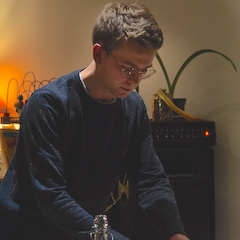“Perdono vi chiedo” (I beg your forgiveness) sings Count Almaviva early into the lengthy Act II finale of The Marriage of Figaro. The Countess Rosina and her handmaid Susanna deny him this for his neurotic (but nonetheless correct) suspicion that Cherubino, the libidinous teenager, was hiding in his wife’s closet. The theme of forgiveness runs persistently through Mozart and Da Ponte’s first operatic collaboration and this crucial scene is paralleled in the finale of Act IV, where, despite the Count’s atrociously adulterous behaviour and his humiliating exposure, the Countess forgives him as though in a divine act of grace, at last restoring the moral transgressions of their journée folle. The Count, almost tragically single-minded in wanting to satiate his lust for Susanna on the night of her wedding, refuses throughout the opera to forgive a single one of his acquaintances but he learns his lesson, we hope, when he is himself pardoned.
Scottish Opera start off their 2016-17 season with a reliable, satisfying bang: the revival of Sir Thomas Allen's 2010 production. And it feels like a revival of a revival as the production itself is firmly traditional with Simon Higlett’s beautiful, borderline sumptuous period set-design and costumes. The reason for eschewing deconstructive (re-)interpretations of this well-loved classic is perfectly legitimate: that Mozart and librettist Lorenzo Da Ponte created such a refined piece of proto-bourgeois comedy (based on the play by Beaumarchais) that to coax out any one suppressed subtext over another will disrupt the extreme tension of sexual desire and contractual repression conveyed by the music, plot and dramaturgy. This underlying tension is cleverly alluded to in Allen’s production with its many sudden bursts of energy: the symptomal impulses in the orchestral playing, the singing, and the acting, which suggest that everything is kept at bay... but only just.
The orchestra, conducted by Tobias Ringborg, deserves mention for being a notch higher than Scottish Opera’s usual standard, delivering Mozart’s score with vivid attention to detail and a fine dynamic range. The chorus was fantastically buoyant and amusing from the very start, in their bustling work on the fields at dawn during the Overture and at their every subsequent appearance. The little girl from the chorus sticking her tongue out at the Count at the end of Act I was another amusing touch. This idea continues during the Countess’ “Porgi amor” in Act II when a girl, like a vision of her childhood, walks diagonally across the stage to the back wings – an effective but insubstantial and underdeveloped motif which risked making certain other directorial details seem haphazard. Another curiosity was in the Act II finale: why would the door to the Countess’ closet be placed invisibly stage right instead of in the place of the dramatically unimportant door to her bedroom?
It quickly became apparent just how brisk the entire production was, leaving barely a gap for applause after most arias and moving quite impatiently from scene to scene. This was really only a problem in Act III which, containing the major arias of the Count and Countess as well as the Countess’ duet with Susanna, forms the emotional core of the opera and requires a slower pace to properly sink in. Gravitas was finally achieved by Act IV in Figaro’s misogynistic aria “Aprite un po’ quegli occhi”, lit with almost gothic brilliance by a single white spotlight, and in Susanna’s “Deh vieni non tardar”. Indeed, Ben McAteer’s Figaro and, in particular, Anna Devin’s Susanna were the two stand-outs, along with an excellent performance by Samuel Dale Johnson as Count Almaviva. Only Hanna Hipp’s Cherubino and Eleanor Dennis’ Countess needed a wider range of expressive nuance to portray these contrasting but intertwined and absolutely essential roles.
Allen’s production of Figaro is undeniably enjoyable, for the most part capturing the tension between the story’s disruptive erotic drive and Mozart’s exquisite Classical style (which, in 1786, was pretty much at its peak). Only occasionally does a clumsy or awkward moment of stage blocking or mise-en-scène betray some conceptual and directorial loose-ends, which may at least tighten as the production’s run continues. The ever-present comic elements veered between rather deliberate and effortlessly hilarious, and at its best the performance was exhilarating. Alongside the mostly excellent vocal performances, this was a strong start to the season and a Marriage of Figaro to remember.




